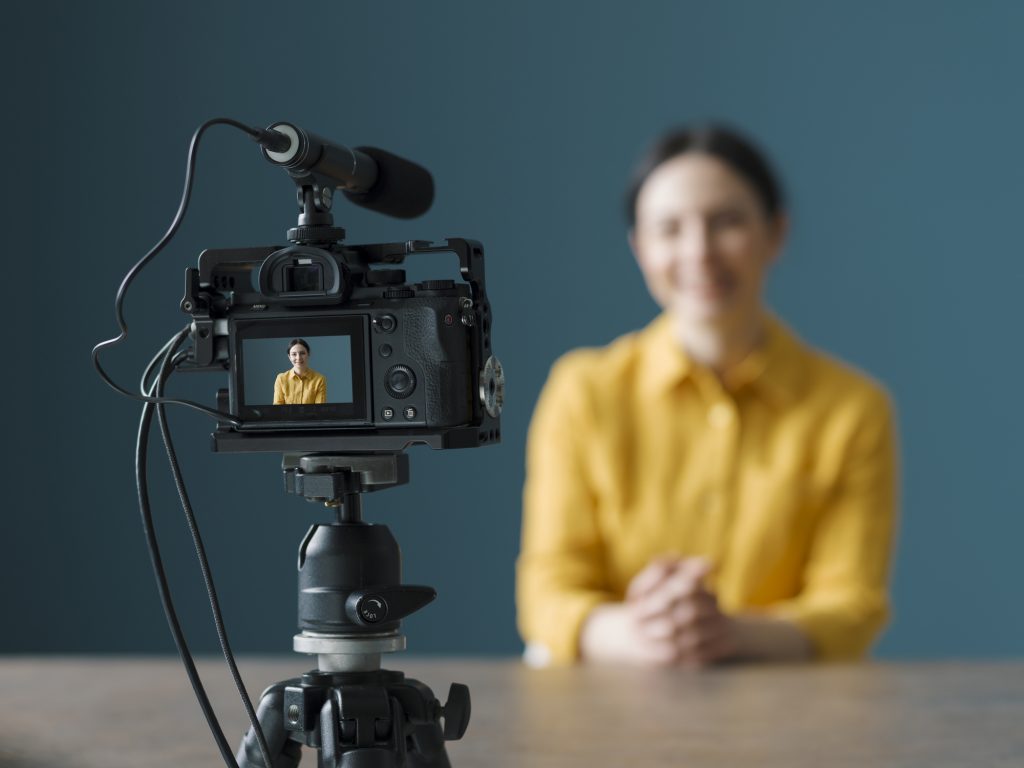

Without question, this year has presented numerous challenges and changes in education. This is especially true for English learner (EL) educators and students alike.
Cues teachers see from students in the classroom are difficult to see through a computer screen, and bonds teachers build with their students can be difficult to achieve when students and educators are remote. Yet we all know that good teaching is the best antidote to combat learning loss among ELs, and ensuring that good teaching requires school leaders and instructional coaches to get direct and deep insight into exactly what teaching is looking like right now.
So, how can coaches get a window into today’s teaching, capture these important insights, and in turn provide valuable feedback, whether educators are teaching in person, hybrid, or remote? Video observation and video coaching.
Enhancing PD with Video Observation
Using video to facilitate professional learning is a tried-and-true practice that isn’t dependent on teaching taking place face to face. Just as easily as educators can capture classroom footage of their teaching in action, they can record video footage of their daily distanced instruction—whether that is happening via Zoom or another platform—to engage in meaningful video-based professional development.
Video has numerous benefits for educators as they work to improve their practice, as further detailed in my book Evidence of Practice: Playbook for Video-Powered Professional Learning:
Gives teachers a mirror. Instead of relying on the teacher’s memory or notes that an observer took, video serves as an objective record providing evidence the teacher may not have seen during instruction. Reflecting back on video can additionally provide the cognitive space teachers need to analyze instruction more productively because they are not also juggling the pressures of real-time teaching.
Being able to further annotate video within an online platform allows coaches and observers to offer targeted feedback by commenting on specific evidence related to a teacher’s learning goals.
This enables teachers to learn both from very concrete bright spots and from specific aspects of instruction in need of improvement. And with the video and associated feedback archived online, teachers can look back and continue to examine their growth over time.
Helps build instructional communities. Video can help build peer-to-peer professional networks and enable educators to work more collaboratively on the sharing of best practices. By watching a fellow educator’s video, a teacher could learn new strategies to engage ELs virtually or a specific instructional practice that yielded positive results in another classroom, such as speaking slowly and emphasizing productive language, for example.
Helps teachers see themselves as their students do. As John Hattie argues in Visible Learning, teachers need to be able to see learning in their classrooms through the eyes of their students. Once they have, he says, they can better evaluate their own teaching, better understand its effects on student learning, and determine how to improve. For teachers, video provides a way for them to directly see if their teaching is having an impact on student participation and learning.
In addition to these benefits, video coaching allows the appropriate people to be available at the appropriate time to view the appropriate moments of classroom instruction, eases logistical challenges related to scheduling traditional in-person observations, produces videos that can be utilized during future professional learning opportunities, and more.
How to Build a Plan for Implementing Video Observation into PD
There are numerous ways video observation can enable districts to scale best practices across their district, as well as integrate with new or existing processes to enhance professional learning for educators.
Choice boards—a menu of different professional learning experiences educators can choose from—are an innovative format to create a roadmap for teachers to drive their own professional learning. They also benefit school and district leaders when designing PD plans because they are flexible enough in their options that they don’t need heavy revisions when there is a change in the teaching environment, such as with the pandemic.
Keller Independent School District in Texas implemented choice boards to provide its educators with a voice in their own learning.
As Valerie Minor, coordinator of professional development and mentoring services at the district, says, “Teacher professional development should not be a one-size-fits-all approach.”
With the choice boards, participating teachers choose how they would like to utilize the video coaching process as part of their learning plans during different phases of the year. The menu of options guides them to focus on different aspects of their lesson design and delivery in different parts of the year. At one point the teacher may post a video introducing a lesson along with a self-reflection, and later they can post a video of a lesson closure, for example.
When a teacher is able to choose when to share the instructional videos, as well as what type of instructional video to share, coaches are able to create a more personalized learning plan that directly correlates with the teacher’s goals. This process shows a more direct impact on student achievement and provides teachers with more consistent coaching and feedback throughout the year in the areas that mean the most to them. In all of its uses, video is a valuable tool that enables coaches to streamline feedback to teachers, allowing them to receive it faster and more easily. As EL educators navigate the remainder of this school year and beyond, this targeted feedback will be pivotal to their professional growth and success and, ultimately, the success of the students they serve.
Adam Geller is author of Evidence of Practice (www.evidenceofpractice.com). He started his career in education as a science teacher in St. Louis, MO, and since 2011, he has overseen the evolution of Edthena (www.edthena.com), a video-powered professional learning platform used by schools, districts, teacher training programs, and professional development providers around the world. Read more from Adam at https://blog.edthena.com.





